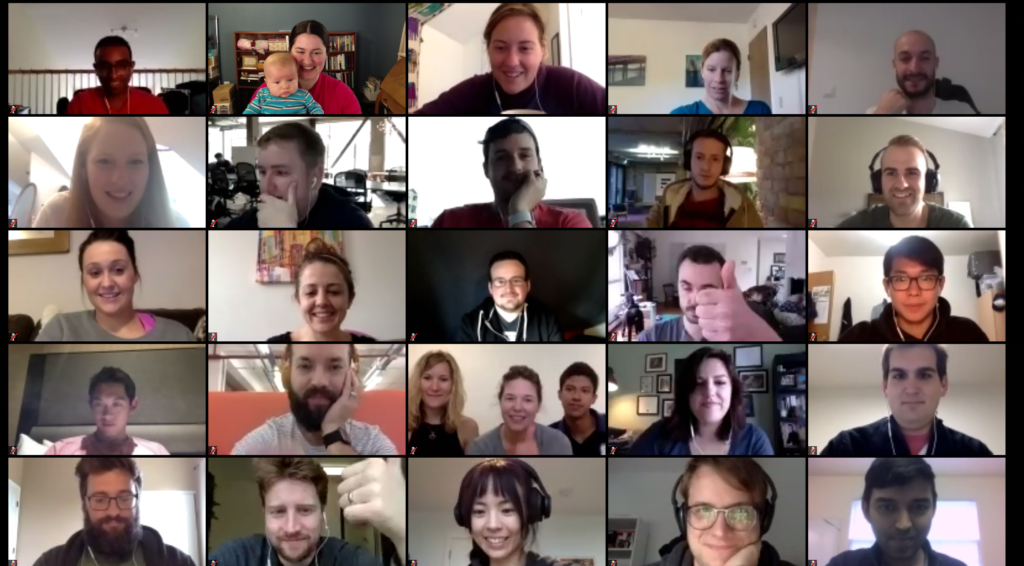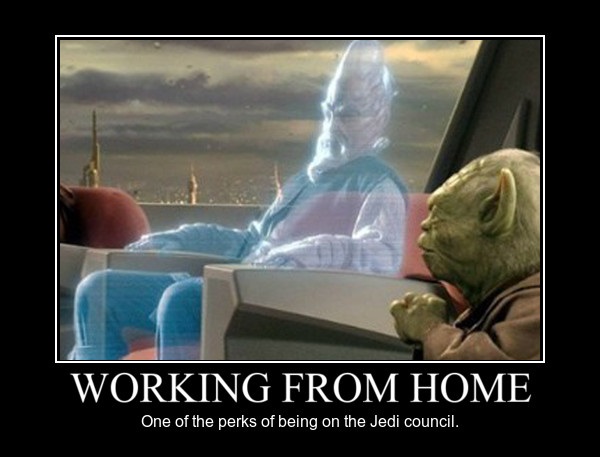It’s true that there’s an idealistic vision of remote working nowadays that it’s hard to shake off. With more and more people making the jump for flexible, location-independent ways of doing quality work, the remote setting is still viewed as the ultimate dream-come-true for any professional.
 “Could you speak louder? Traffic noise in here is terrible”
“Could you speak louder? Traffic noise in here is terrible”
But it’s important to keep in check the nuances of this contemporary reality. One of the biggest communication challenges is to hold remote meetings with more than two speakers. Let’s see the 5 biggest challenges to overcome:
Lack of simultaneous talking:
Unlike in a physical meeting, where people can conduct small parallel talking with one or two people while another smaller group is also talking, it’s impossible to do this in the remote environment. Everyone has the same volume for speaking and listening, and simultaneous talking just generates an incomprehensible noise.
The result is a very unidirectional meeting, where it’s difficult to properly understand when is the time for you to jump into the talking without interrupting someone. This could tone down the quality of everyone’s inputs since it’s hard to introduce facts and opinions at the right time.
 Please raise your hand if you want to say something.
Please raise your hand if you want to say something.
Technical difficulties:
Keeping a nice rhythm in meetings is hard. Keeping this and having to deal with technical issues at the same time is even harder. Any kind of connection loss or lag might significantly break the rhythm and impact negatively the expected results in a meeting.
The Mute Button effect:
Sometimes is necessary to use the mute button so your environment audio doesn’t disrupt the meeting. This could be traffic, a barking dog, a baby crying, music from a cafe, anything else. But this also creates a kind of escapism for the muted individual, since it’s possible to get all kinds of distractions while still listening to whoever’s talking at the meeting.

Lack of small talk:
It’s absolutely natural to have a certain degree of small talk, especially at the beginning of every meeting where people can exchange pleasantries while getting acquainted. Influenced by what we discussed in number 1, it’s hard to have a natural small talk in the remote meeting, and people tend to jump straight to the topic. This could be seen as helping the effectiveness of meetings, but the lack of daily camaraderie hurts to overall interaction of the whole team, which could contribute to a lack of participation due to people not feeling comfortable with each other.
Skipping necessary details
The natural structure for meetings leans towards broader topics and general discussions around them. But the remote environment requires much richer details to be further discussed since there’s no possibility of a quick conversation at your coworker’s desk. This contributes to meetings that don’t clarify all the necessary points regarding the topics, and as a consequence could disengage a lot of the team members since they might not feel the need to jump in without being questioned.
Next time, we’ll try to come up with solutions to each one of those 5 challenges.



